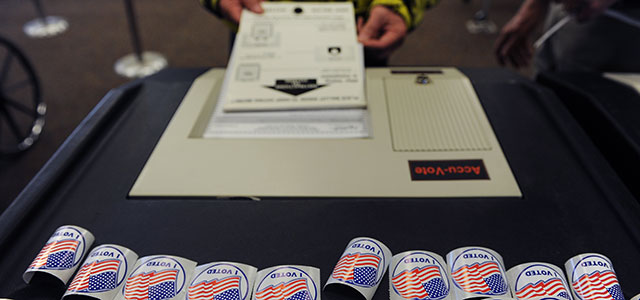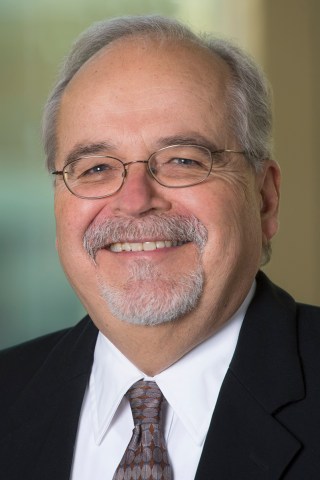
Reformers hate it when this happens: The country’s most widely adopted reform designed to make voting easier may lower the chances that an individual voter will go to the polls, according to a new study to be published in an upcoming issue of the American Journal of Political Science.
“The most popular reform—early voting—is actually associated with lower turnout when it is implemented by itself,” according to the University of Wisconsin team of political scientists who studied state voting patterns in the 2004 and 2008 presidential elections. “This result upends the conventional view that anything that makes voting easier will raise turnout.”
Controlling for other factors that predict an individual’s probability of voting, these researchers found that early voting appears to “lower the likelihood of turnout by three to four percentage points” compared with the probability in 15 states that do not allow early voting or had not implemented other voting reforms.
These early-voting states included some of the largest and most politically important, among them Ohio, Florida, Texas and New Jersey. (They did not include Oregon and Washington, two vote-by-mail states, among their early-voting states because “they have unusual mail-in-balloting rules.”)
In contrast, these researchers found that Election-Day registration in which citizens may register and vote on Election Day appears to have boosted the probability of voting by about three to four percentage points in states that have adopted this reform.
Their claims are based on a detailed analysis of vote history and demographic information from more than 150,000 individuals interviewed in November, 2004 or November, 2008 as part of the Census Bureau’s Current Population Survey. The surveys included a question that asked if the individual had voted.
To build their model predicting individual turnout, they examined demographic factors such as level of education, marital status, age and gender. Their model also included a measure of campaign competitiveness in each voter’s state as well.
The researchers also divided states into four groups based on whether the states have adopted any of these reforms: early voting; Election-Day registration; same-day registration, which allows citizens to register and vote on the same day but in advance of Election Day; or none of these reforms. They further identified states that had adopted two or more of these changes, including Wisconsin and Iowa, which have implemented all three.
Using a statistical technique called regression analysis, the researchers estimated the impact of each factor—including voting reforms in force in his or her state—on an individual’s probability of having cast a ballot, all other factors held constant.
They found that only early voting when it is implemented by itself and Election-Day registration appeared to significantly affect turnout chances—early voting in a negative way and Election-Day registration positively. In 2008, eighteen states allowed early voting but had not implemented other reforms, including Florida, Texas, New Jersey and Indiana. Four were classified as Election-Day only, including Minnesota and New Hampshire.
Why should turnout go down when people are allowed to vote early—and why do more people cast ballots in states that permit people to register and vote on Election Day?
These researchers say it’s because early voting robs “Election Day of its stimulating effects,” reducing social pressure to vote and gives less reason for campaigns to motivate their supporters and get them to the polls.
[S]
Early voting laws also seem to affect the campaign itself by reducing efforts on both sides to mobilize support. For example, they examined patterns of media advertising in early voting and no-reform states. “The volume of ads is lower in states with early voting and the ramp up of ads before Election Day is also less steep in these states,” they found.
They acknowledge the added convenience of early voting “but this effect is more than offset by a reduction in mobilization efforts, resulting in lower net turnout.”
In contrast, Election-Day registration “eliminates the need to register before the campaign reaches maximum intensity and focuses social and political activity on a single day. Election Day is abuzz with discussion, media coverage, and last-minute contacts from parties and candidates, factors that can exert a mobilizing impact on a wider group of potential voters in (Election-Day registration) states,” they wrote.
Earlier studies on the impact of voting reforms have produced mixed results. A 2007 study concluded that early voting had no effect on turnout in midterm or presidential elections between 1980 and 2004. Another research team found that early voting produced a short-lived increase in turnout that disappears by the second presidential election after the reform was implemented. Studies in Washington and Oregon have found that voting-by-mail had a positive impact on participation, though other researchers estimated that turnout would decline in California if that state shifted to mail-in balloting.
Note: The study was conducted by University of Wisconsin professors Barry C. Burden, David T. Canon, Kenneth R. Mayer and Donald P. Moynihan. The researchers are affiliated with the university’s Election Administration Project, which is supported by funding from the Pew Charitable Trusts, the principal funder of the Pew Research Center.
